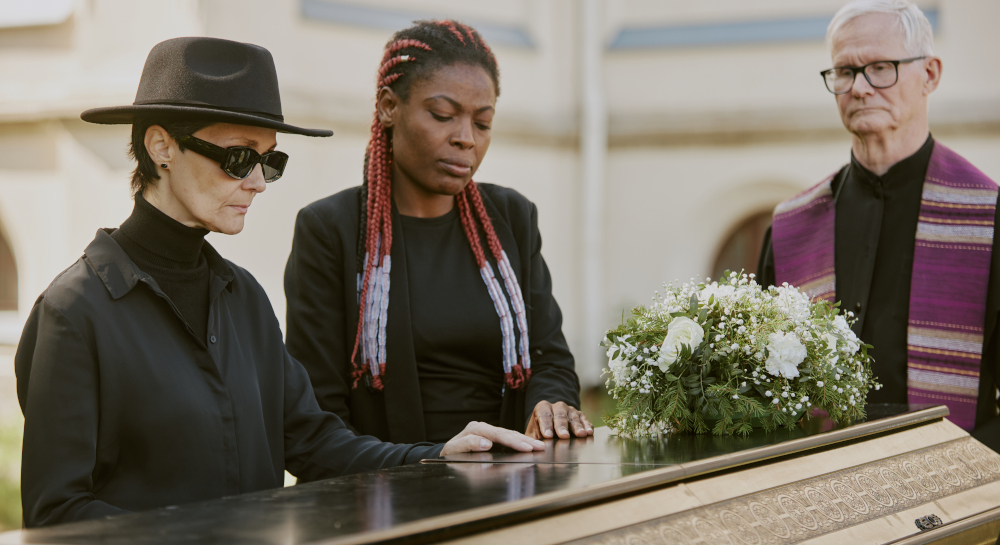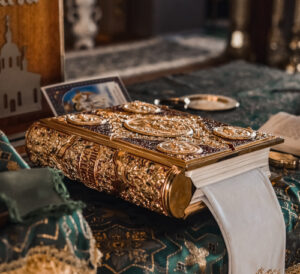
They said he wanted to go out shining. Not smiling, not quietly, not even in peace, just shining. And so, when the funeral procession wound its way through the township’s narrow roads, people stepped out of their gates not just to pay respects but to see what kind of man could make gold look solemn. The hearse was wrapped in reflective film. His casket was lacquered and mirrored like a show car. Even the pallbearers wore matching satin gloves that caught the morning sun like coins tossed in a river. It was a send-off fit for a king, or maybe just a man who spent his last years trying to look like one.
In some parts of South Africa, funerals aren’t quiet affairs. They are staged. They are costed. They are curated with the same attention you’d find at a wedding or a record release. The outfits are picked out weeks in advance. The fabrics shimmer. The shoes tap. The procession moves not just in grief but in pageantry. But what might look like extravagance to the outsider is actually something closer to code. A man’s funeral is often the last chance his community gets to rewrite the script of his life. Maybe he didn’t leave a will. Maybe he left chaos. But in that final scene, wrapped in gold-trimmed linen, he can be remembered as more than the debts he owed or the jobs he lost. He can be remembered as a man who was valued.
In this way, gold becomes the grammar of farewell. It speaks for the family when grief has made them mute. A gold chain across a coffin, a glinting ring slid onto a still finger, the metallic threads woven into a headwrap, these are not just displays, they are declarations. Declarations of love, of status, of obligation. Sometimes, they are offerings. Not to the deceased, but to the community. An unspoken agreement that says, “We honoured him, so speak kindly of him.”
 There’s also a practical tension humming beneath all this shine. Families stretch budgets to breaking points for these farewells. Installments are paid to funeral parlours, taxis are hired on credit, and outfits are sourced from boutiques that know exactly what kind of prestige is needed for a Saturday morning send-off. Church women whisper about the price of the casket, the cost of the catering, the origin of the suit. No one wants to say it out loud, but sometimes the event becomes more about the spectacle than the spirit. Still, it persists. Because to bury someone in gold is to bury them with the dignity they may not have had in life. And sometimes that is the only power the living still hold.
There’s also a practical tension humming beneath all this shine. Families stretch budgets to breaking points for these farewells. Installments are paid to funeral parlours, taxis are hired on credit, and outfits are sourced from boutiques that know exactly what kind of prestige is needed for a Saturday morning send-off. Church women whisper about the price of the casket, the cost of the catering, the origin of the suit. No one wants to say it out loud, but sometimes the event becomes more about the spectacle than the spirit. Still, it persists. Because to bury someone in gold is to bury them with the dignity they may not have had in life. And sometimes that is the only power the living still hold.
There is a strange intimacy in watching someone be dressed for burial. Makeup is applied like memory work. The skin is powdered not to beautify but to soften the blow of death. The jewelry is chosen not by taste but by narrative, what would they have worn if they were alive and trying to make an impression? And who will see them now and remember them as larger, brighter, more successful than perhaps they ever were? In that way, funerals become both archive and fiction.
And then there is the quiet violence of it all. The cousin who didn’t get consulted. The girlfriend who was left out of the obituary. The friend who thinks the money could have gone to school fees instead of imported wreaths. The weight of gold doesn’t only sit on the chest of the dead, it rests on the backs of the living. But still they carry it. Because the image of a man being lowered into the ground wearing his finest might be the last picture anyone keeps. And in a world where history erases the poor faster than it records them, that image matters.
We don’t always get to choose what kind of life we live. But maybe, just maybe, we can choose the ending. One with trumpets. One with linen suits and synchronised steps. One with gold cufflinks and cologne still lingering in the folds of a borrowed jacket. One where the world, for a moment, believes we were kings. Even if only for a day. Even if only in death.



